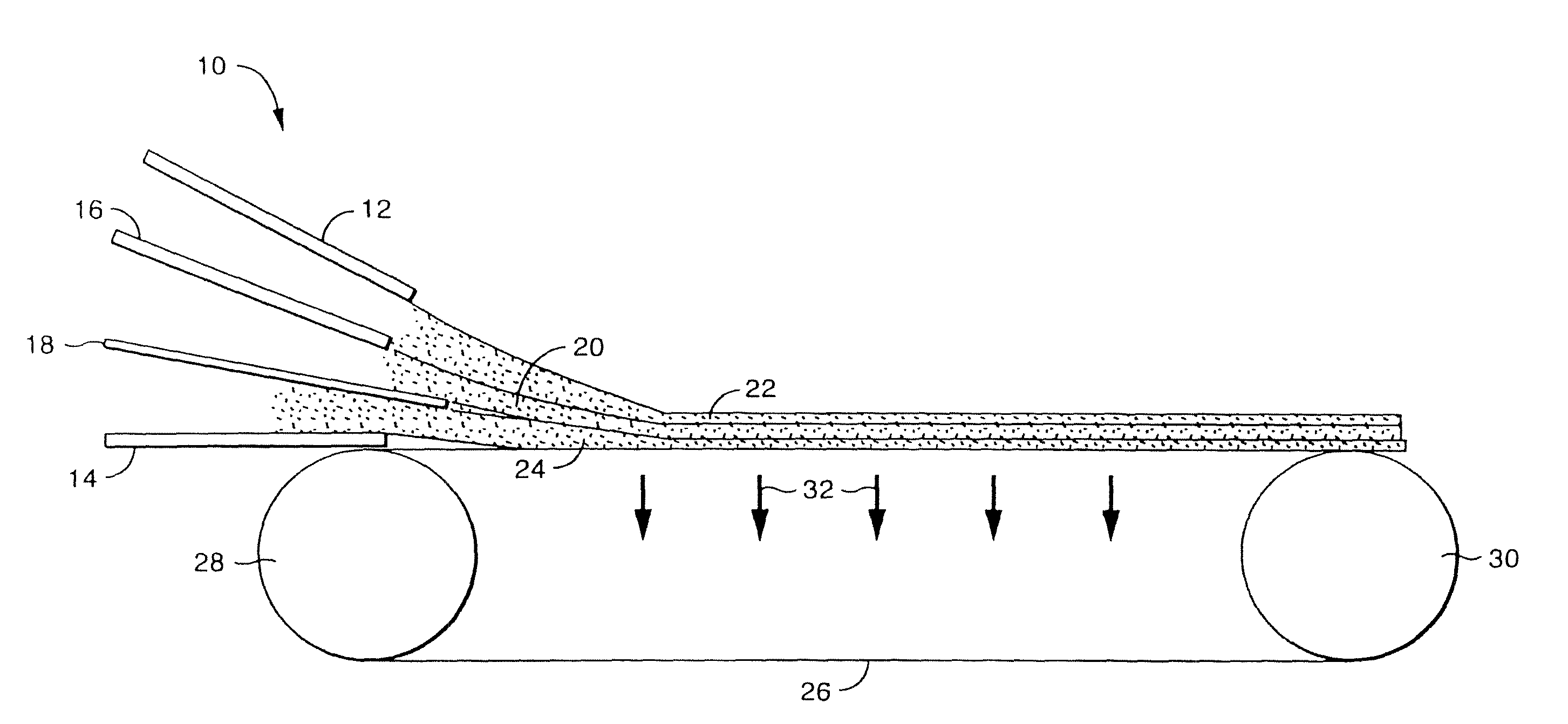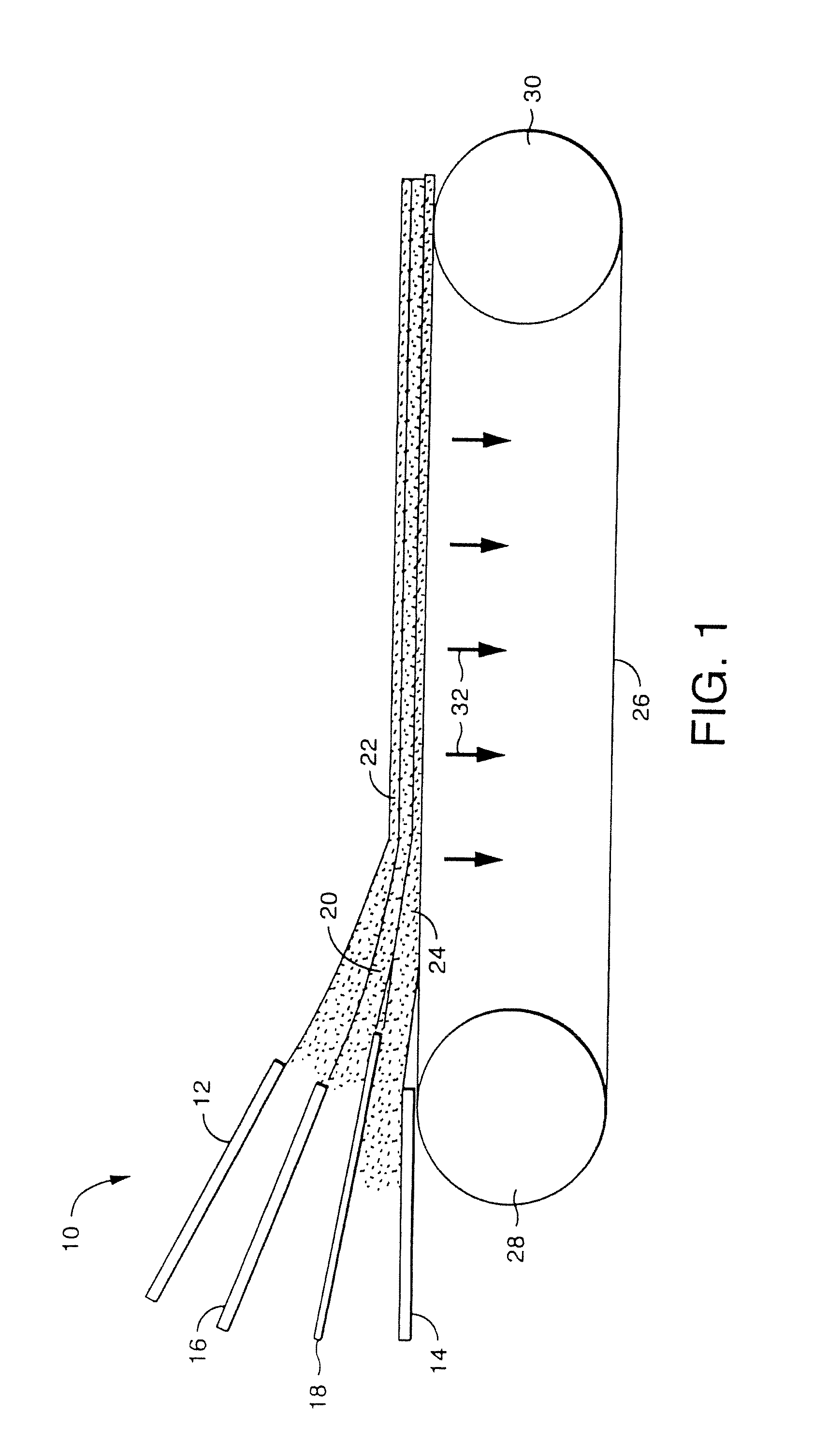Conductive webs
a technology of absorbent articles and webs, applied in the field of absorbent articles, can solve the problems of difficult to tell whether or not the absorbent article has been insulted with a body fluid, difficulty in efficiently and reliability incorporating, and difficulty in detecting the insult, so as to achieve the effect of easy incorporating
- Summary
- Abstract
- Description
- Claims
- Application Information
AI Technical Summary
Benefits of technology
Problems solved by technology
Method used
Image
Examples
example 1
For exemplary purposes only, the following demonstrates the conductivity of base webs made in accordance with the present disclosure.
Uncreped, through-air dried wetlaid webs were made according to the present disclosure containing conductive carbon fibers. The uncreped, through-air drying process used was similar to the processes described in U.S. Pat. No. 6,887,348, U.S. Pat. No. 6,736,935, U.S. Pat. No. 6,953,516, and U.S. Pat. No. 5,129,988 which are all incorporated herein by reference.
The tissue making process included a three-layer headbox that was used to form a wet web. More particularly, a three-layered web was produced containing northern bleached softwood kraft fibers (LL19 from Terrace Bay Pulp Inc.) in the two outer layers and a mixture of the above softwood fibers combined with carbon fibers in the middle layer. The carbon fiber used was TENAX 150 fibers obtained from Toho Tenax having a cut length of 3 mm. The fiber furnish used to produce the middle layer contained 5...
example 2
For exemplary purposes only, the following demonstrates the conductivity of base webs made in accordance with the present disclosure.
A conductive nonwoven web was made according to the present disclosure containing conductive carbon fibers. The conductive nonwoven web was made on a Fourdrinier 36″ paper machine, which is located at the publicly accessible HERTY Advanced Materials Development Center located in Savannah, Ga.
A single layered web was produced containing a homogeneous blend of northern bleached softwood kraft fibers (LL19 from Terrace Bay Pulp Inc.), southern softwood kraft fibers (eucalyptus from Aracruz Celulose) and carbon fibers. The carbon fiber used was TENAX 150 fibers obtained from Toho Tenax having a cut length of 3 mm. The fiber furnish used to produce the web contained 94% by weight wood pulp fibers and 6% by weight carbon fibers. The wood pulp fiber blend contained 75% by weight softwood and 25% by weight hardwood.
The softwood furnish was refined using a 16″ ...
PUM
| Property | Measurement | Unit |
|---|---|---|
| length | aaaaa | aaaaa |
| length | aaaaa | aaaaa |
| diameter | aaaaa | aaaaa |
Abstract
Description
Claims
Application Information
 Login to View More
Login to View More - R&D
- Intellectual Property
- Life Sciences
- Materials
- Tech Scout
- Unparalleled Data Quality
- Higher Quality Content
- 60% Fewer Hallucinations
Browse by: Latest US Patents, China's latest patents, Technical Efficacy Thesaurus, Application Domain, Technology Topic, Popular Technical Reports.
© 2025 PatSnap. All rights reserved.Legal|Privacy policy|Modern Slavery Act Transparency Statement|Sitemap|About US| Contact US: help@patsnap.com



